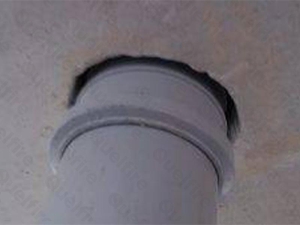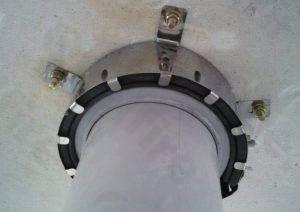How many times has this happened onsite?
You’re working with a 110mm diameter plastic pipe that is penetrating a fire compartment floor. Now, you know it can be suitably firestopped with a traditional fire collar to the underside of the floor, but it just so happens that there is a pipe coupling in the exact place where the fire collar needs to be installed. Does this sound familiar?

A pipe coupling, otherwise known as a joint or connector, is a short pipe or tube that has a socket at either one or both ends, allowing two free-standing pipes or tubes to be joined together. And because the diameter of a 110mm plastic pipe coupling is typically around 125mm diameter, it is often assumed that a 125mm fire collar can be installed around it. Job done. However, what is not accounted for are the extra layers of plastic of both the pipe and pipe coupling, meaning that not just any fire collar is suitable for use.
That is why it is important to engage early with relevant parties, such as the firestopping manufacturer, to ensure there are available tested solutions for the application in question. In this case a 110mm pipe, with an added pipe coupling. The only way to ensure the effective compartmentation of a building should a fire break out, is to work to the manufacturer’s tested scope of application, whilst utilising their guidance.
At Quelfire, we have an ever-growing library of tested details, based on feedback from our customers and trends on the market. We also have specific test evidence for the application above; the QWR Fire Collar has been specifically tested at Waringtonfire, providing up to a 4-hour fire rating.

Our fire collars, as well as many of our other firestopping products, contain a high-pressure graphite intumescent. When exposed to heat this material rapidly expands and, with the pressure exerted from the metal shell, closes the gap left behind by the melted pipe and pipe coupling. This works to stop the spread of fire through the concrete floor into the next compartment.
To find out more about this specific tested detail, please don’t hesitate to get in touch at technical@quelfire.co.uk.

